e potential plant growth and health benefits of Epsom salt also referred to as magnesium sulfate scientifically, are attracting the attention of gardeners. This essay will look at what makes up Epsom salt and how it behaves when used on different types of plants. We will also study photosynthesis, nutrient absorption, and overall vitality as some essential plant functions that are related to two elements –magnesium and sulfur that make part of Epsom salt. Additionally, there’ll be information about the best methods for applying, dosage rates, and which kinds of plants Epsom salts would be most beneficial for. It will also be a comprehensive manual on Epsom salts in horticulture.
The Role of Epsom Salt in Plant Health
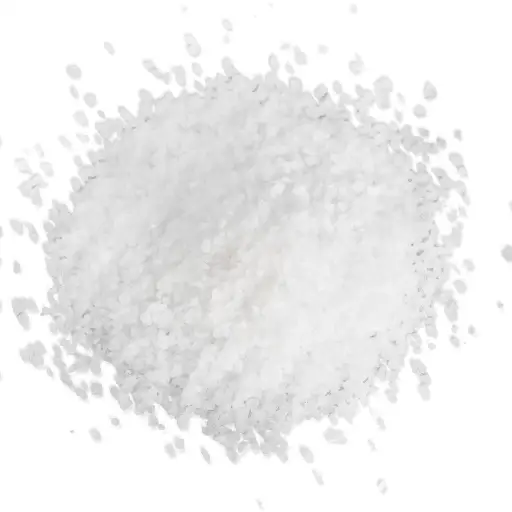
Epsom salts are important in boosting plant health because they provide magnesium and sulfur, both of which are micronutrients vital for various physiological processes. Magnesium is essential for producing chlorophyll and allows plants to conduct efficient photosynthesis by converting sunlight into energy. It also aids in activating enzymes that support nutrient uptake and synthesis, thus enhancing overall nutrient absorption and utilization. On the other hand, sulfur is necessary for amino acids and proteins, which form the basic structure of plants. Together, these components promote rapid growth rates and improve flowering and fruiting in different plant species [sic]. Thus, proper application of Epsom salt can result in healthier and more productive garden crops.
Magnesium’s importance in understanding Plant Growth
Magnesium helps plant development through its role in synthesizing chlorophyll pigments that directly affect photosynthesis. Regarding technical parameters, about 0.2% – 0.5% Mg concentration in plant tissues is usually considered optimal for normal growth and development [sic]. Insufficient magnesium levels can lead to interveinal chlorosis – where the tissue between the leaf veins turns yellow while the veins remain green indicating a lack or disruption in chlorophyll formation.
Moreover, magnesium has a critical function about enzyme activation, with over 300 enzymes being dependent on it as a catalyst, mainly those that metabolize carbohydrates and nucleic acids like DNA [sic]. This indicates that magnesium influences the general healthiness of plants, such as vitality or the rate at which they grow and their ability to withstand certain environmental conditions. Using Epsom salt containing magnesium sulfate may replenish nutrients in soils that are deficient in them, thus maintaining appropriate levels of this element required by various crops during their growing period. To ensure its correct measure, soil tests should be conducted to know how much Magnesium already exists before applying Epsom salt at a recommended dose range of 1-2 tablespoons per gallon of water, applied every 4 to 6 weeks during the growing season.
How Sulfate Affects Soil and Plant Health
Sulfates are considered essential anions in the soil for a wide range of reasons that affect plant life. As sulfur is a constituent of amino acids, including cysteine and methionine, it is critical for protein synthesis and, hence, essential in forming plant tissues. Additionally, it leads to the production of hormonal compounds that control growth, development, and responses to stresses.
From a soil chemistry standpoint, sulfate improves soil structure and fosters microbial activities, which are fundamental for nutrient cycling as well as the decomposition of organic matter [sic]. This increases the availability of important nutrients such as nitrogen and phosphorus required by plants. Also, sulphates aid in mitigating salinity levels in soils and thus can improve fertility within agricultural systems over time. This ensures a consistent methodological approach to maintaining good soil health conditions with adequate amounts of sulfur-containing fertilizers being added whenever there are signs [sic]of deficiency through routine soil testing [sic].
Spotting an insufficiency of magnesium in plants.
There are several visually distinct signs that can be used to identify the lack of magnesium in plants. The most obvious symptom is interveinal chlorosis, where the yellowing occurs between leaf veins while the veins remain green. This symptom usually first appears on old leaves because magnesium moves around easily in plants, leading to deficiency symptoms in older foliage. Also, affected leaves may become blotchy or marbled and ultimately turn down or die completely.
To determine the amount of magnesium present in soil, a soil test should be conducted. Normal magnesium ranges between 50 and 100 ppm (parts per million) for optimum plant growth. Leaf tissue analysis also gives some information: Healthy leaves contain about 0.2% to 0.5% dry weight Mg. When it goes below this range, especially below 0.2%, then there is likely to be a magnesium deficiency.
The reason behind addressing this deficiency lies on its central role in chlorophyll synthesis and photosynthesis processes. These processes will stall if there is not enough magnesium resulting in limited growth and leading to low yield output in crop production so far as such process develops retard during crop development like vegetables et alii cetera; hence detection and timely correction through the application of Epsom salts since they contain high percentage of magnesium which helps in rescuing plants by making them grow well again thus keeping good health and productivity hence keeping adequate levels of this nutrient element both within foliage or soils within which crops are grown upon otherwise regularly based on constant checks with regards to leaf tissues along with soils so as to monitor their readiness levels regarding nutrients management strategies required thus assisting farmers accordingly concerning nutritional requirements for maximum yields from such crops including vegetables among others.
Best Practices for Applying Epsom Salt in the Garden
When applying Epsom salt in the garden, it is important that you follow some best practices to increase its efficacy and promote plant health. First, dissolve 1 to 2 tablespoons of Epsom salt in about a gallon of water and use this solution to water plants ensuring that it gets into the root zone where nutrient absorption takes place. Besides preventing leaf burn, this method provides for more even distribution of magnesium directly to feeder roots.
Another good way is spraying with Epsom salt as foliar spray preferably early mornings or late afternoons when temperatures are low. Mix roughly one tablespoon of Epsom salt with a gallon of water and directly spray the leaves while taking the undersides into account for better absorption. Regular applications during the growing season—approximately every four to six weeks—may help keep appropriate levels of magnesium, especially for magnesium-sensitive plants such as tomatoes, peppers, and roses.
It is critical to periodically test the soil to monitor initial magnesium values because the excessive application can result in imbalances with other nutrients like calcium. Also, adding Epsom salts before planting can increase initial nutrient availability, particularly in soils deficient in magnesium. Always watch post-treatment plant responses since individual species differ in their nutrient requirements and sensitivity to additional magnesium.
How to Properly Dilute and Apply Epsom Salt Solutions
To dilute and apply your Epsom salts properly, start by using the right proportion for optimum nutrient uptake. A common suggestion is dissolving 1 tablespoon of Epsom salt in 1 gallon of water, which should be mixed thoroughly until all particles have dissolved completely. Depending on your plants’ needs, this solution can be administered either as a soil drench or through spraying on foliage.
For soil applications, focus on watering the base of the plants allowing easy penetration into the root zone by magnesium (Garden Smart Colorado State University Extension). For example, if you are using a foliar spray, apply during the cooler parts of the day to reduce evaporation and enhance absorption, aiming not only at the upper surfaces but also for the undersides of leaves. Maintain magnesium levels by repeating this procedure after every four to six weeks during growing seasons. Observe any nutrient deficiencies or excesses in the plants post-application and adjust your program accordingly.
Frequency of Epsom Salt Application for Optimal Results
The frequency with which Epsom salt should be used is determined mainly by particular crops being grown and existing soil conditions. Basically, it is recommended that Epsom salt application take place in between intervals of 4-6 weeks throughout the growth season to guarantee proper levels of magnesium. On heavy feeders like tomatoes and peppers, more frequent applications might be useful, even twice weekly. Conversely, lighter feeders or well-balanced soils may need just a once-a-month application. Regular soil testing would ensure that applications are based on real-time plant nutrient needs; therefore adjustments can be made as necessary while still within a growing season (Garden Smart Colorado State University Extension). Always monitor plant health and response to determine if modifications to the application frequency are necessary, ensuring a tailored approach for optimal results.
Identifying Plants in Danger of Overuse
- Chlorosis: This disorder manifests as yellowing of the leaves, particularly in older foliage. It is indicative of a nutrient imbalance, such as too much magnesium. Overapplication disturbs the uptake of other essential nutrients, like calcium, causing them to be deficient.
- Leaf Burn: The rims may have an appearance that is scorched or necrotic and this can be due to salt build up from excessive Epsom salts application on the soil. This can cause desiccation of the plant tissue leading to retarded growth.
- Poor Growth: Poor sustainable growth patterns are signs of excess nutrient levels. When plants use their energy to cope with a distorted nutrient profile, they tend to lose their overall vigor, resulting in weakened stems and poor fruit set.
- Increased Susceptibility to Disease: An overdose of Epsom salt makes it harder for plants to defend themselves naturally against fungal attacks and insects, thereby making them prone to infections. This is often evident through leaf wilt, unusual spots on leaves, or rapid deterioration in the health status of plants.
- Wilting: Even in the presence of moisture, wilting may result from root dysfunction due to high salinity levels in soils. Too much magnesium can interfere with the plant’s ability to absorb water.
Epsom Salt for Different Types of Plants
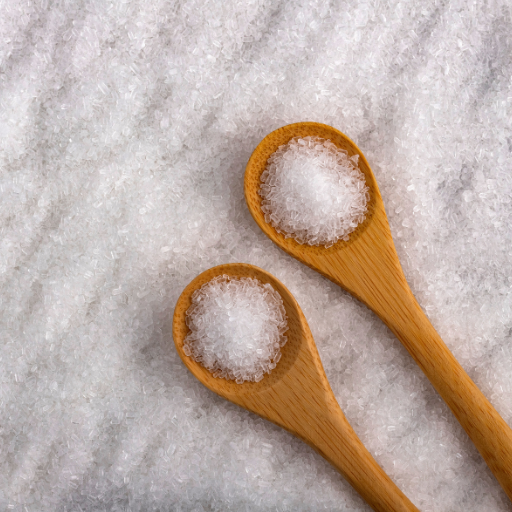
- Vegetables: Epsom salt is often recommended for vegetables such as tomatoes, peppers, and spinach to stimulate fruit production and enhance green leaf coloration. The magnesium content contributes to the synthesis of chlorophyll, which is important for vigorous growth and productivity.
- Flowering Plants: Epsom salt can promote flowering in roses like red roses or magenta begonias by enhancing the absorption of essential elements. Magnesium strengthens cell walls, allowing plants to maintain beautiful flowers and extend blooming periods.
- Houseplants: Houseplants occasionally require Epsom salt as a supplement to correct nutrient deficiency, especially those with yellowing leaves or slow growth. It promotes healthy leaves and enhances hardiness of indoor plants in general.
Using Epsom Salt for Vegetable Gardens: What to Know
When using Epsom salt on vegetables, it should be applied carefully so that maximum benefits are obtained without harm caused by excessive use. Generally, it is advisable to mix one tablespoonful of Epsom salts per gallon of water and use as a foliar spray or soil drench every 4-6 weeks during the growing period. This ensures enough magnesium and sulphate absorption thereby preventing blossom-end rot in tomatoes while promoting higher pepper yields. Additionally, it is important to carry out soil tests before applying any nutrients; too much magnesium causes imbalances, mainly calcium and potassium, which are vital for plant health. Also consider integrating Epsom salts into an all-inclusive fertilization strategy with other organic fertilizers used regularly so as to achieve nutrient balance appropriate for optimum vegetable crops.
The Benefits of Epsom Salt on Flowering Plants
Magnesium sulphate, commonly referred to as Epsom salt, has numerous advantages for flowering plants’ overall well-being. These include stimulation of chlorophyll formation, leading to more energy through photosynthesis, hence brighter blooms in terms of color intensity and size. Magnesium also helps to take in nutrients, especially phosphorus, which is vital for flower growth apart from promoting the growth of flowering colors. In addition, the sulfate element makes all essential nutrients available to plants and so improves the fertility of soils. This will lead to more and bigger flowers as well as longer periods of blooming hence improved beauty in your garden. To enhance this, it is recommended that Epsom salt be applied during early flowering so as to provide adequate nutrients for the entire period of plant development.
Is Epsom Salt Suitable for Indoor and Potted Plants?
Epsom salt is indeed suitable for indoor and potted plants because it is a good source of magnesium as well as sulfur both of which are needed by every plant. Both anecdotal evidence and research findings have indicated that the use of Epsom salts can enhance nutritional uptake, thus promoting lush green foliage among indoor plants. For potted plants, Epsom salt should be used with caution; usually not directly but in a diluted form in order to prevent accumulation of salts that can harm roots. Frequency recommendations differ but diluted solutions applied once monthly during the growing season are often mentioned for achieving best results. Moreover, some plants, like those with yellow leaves or stunted growth, may benefit a lot from using Epsom salts since they show signs of magnesium deficiency diseases.
Addressing Common Concerns About Epsom Salt Use
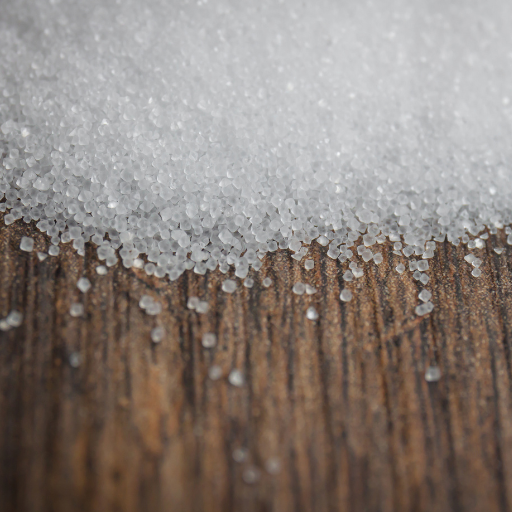
Several concerns are common when considering Epsom salt in gardening. Firstly, the misconception that it can replace all nutrients must be dispelled; it only contains magnesium and sulfur while not being a complete fertilizer. Therefore, plants require both macro and micronutrients, with Epsom salt diving into a properly balanced fertilizing regime but not replacing it. Second, too much application may lead to a concentration of salts and unbalanced nutritional conditions in the soil thereby risking the health of roots. Thus, observing recommended rates of usage is vital. Finally, although some gardeners say they see rapid improvements in plant health and blooms; this may vary based on individual plant species’ particular nutritional requirements. Consequently, monitoring plant responses after application will help you take advantage of Epsom salt.
Is Epsom Salt Bad for Soil Microorganism?
Research findings about the impact of Epsom salt on microbial life in soils are mixed. Generally speaking though, magnesium sulfate is believed to be harmless to soil microorganisms when applied at standard levels [1]. This implies that microbes need magnesium as one of their most essential nutrients for several microbial processes including enzyme reactions and nutrient cycling within soil ecosystems [2]. However, excessive amounts can increase salinity which affects microbe activity and biodiversity [3]. In moderate doses or amounts, however, magnesium through Epsom salt aids good microbial health by providing enough magnesium needed for a healthy living environment within soils as well as promoting balance in soil ecosystem [4]. For this reason, proper consideration should be given towards maintaining a balance between optimal chemical compositions while expanding the application of exogenous mineral sources such as Epsom salts into agricultural systems with different management practices.
How Does Epsom Salt Influence Soil pH Levels?
Epsom salt, made mainly of magnesium sulfate, does not cause significant changes to pH level when used correctly; these levels normally remain within an optimum range for many crops (usually between 6 and 7).
However, it is important to analyze soil pH levels around the application area and its current composition. For instance, in magnesium-deficient soils, adding Epsom salt could indirectly affect pH by promoting the uptake of other trace elements, such as calcium, that can impact soil acidity or alkalinity. Thus, applying Epsom salt can help in achieving a more balanced nutrient availability that promotes optimum plant growth while not significantly altering soil pH.
It is recommended to use pH meters or soil testing kits to assess any slight changes in pH after spraying Epsom salts on flowers especially in delicate environments where maintaining a crop-friendly balance is crucial. Regular monitoring can help ensure favorable growth conditions for plants thereby validating the nutritional regimen employed.
Are There Any Long-Term Effects on Soil Health?
In conclusion, there are long-term effects of Epsom salt on soil health that mainly revolve around sustained increases in soil magnesium levels and how this affects nutrient dynamics [1]. In situations where soils lack enough magnesium content, regular applications of magnesium sulfate have been found to improve both plant growth and yield thus improving overall fertility and structure of soils over time [2]. Additionally, studies have shown that optimum levels of magnesium support microorganism activity which is essential for cycling nutrients as well as organic matter breakdown [3].
On the other hand, overuse of Epsom salts can result in salt build-up in the soil, which might lead to salinity problems that are harmful to plants and soil structure. It is important to use Epsom salt carefully and with comprehensive soil care practices such as organic amendments because it helps keep our soils balanced ecosystems. Therefore, regular testing of soil for both magnesium and salinity levels will mitigate risks while maximizing long-term benefits of using Epsom salt in managing soil health.
Comparisons with Other Soil Amendments
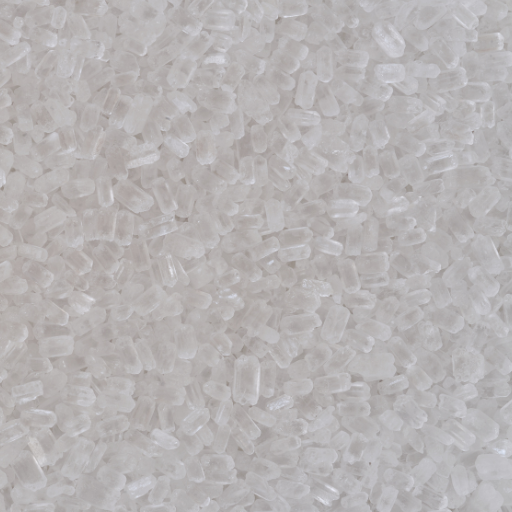
For Epsom salt and various other soil modifications, their exact nutrient profiles and effects on the health of the ground should be considered. For instance, lime and sulfur are some of the commonly used compounds for adjusting soil pH to create a conducive atmosphere in which nutrients can be easily accessed. Lime also provides calcium, while Epsom salts also have magnesium and sulfate; hence, they can improve soil structure and counter acidity.
On the other hand, compost is a widely used amendment that adds organic matter to soils while increasing microbial activity and water retention thereby enhancing overall soil fertility. In contrast with Epsom Salt, compost improves biodiversity in the soil ecosystem as well as providing a wide range of nutrients.
Moreover, potassium sulfate products provide both potassium and sulfur without salinity issues associated with excessive use of Epsom salts towards both nutrients required by plants. In conclusion, the choice of the best-suiting soil ameliorants should be guided by specific soil deficiencies and/or management goals with a view to adopting a balanced approach to soil fertility. To change amendment choices and optimize plant health outcomes through this important step it is necessary to conduct regular soil testing.
Which One Is Better? Comparison Between Epsom Salt And Traditional Fertilizers
Epsom salt is different from traditional fertilizers, which have more than one nutrient element. The main ions in conventional fertilizers are nitrogen (N), phosphorus (P), and potassium (K), referred to as NPK for short. Nitrogen is essential for vegetative growth; phosphorus supports root development, including flowering, while potassium helps in overall plant functions such as disease resistance or drought tolerance.
It is therefore vital when comparing Epsom salt with traditional fertilizers that we consider which specific mineral nutrients are required by the crops concerned. Epsom salt supplies magnesium since it plays an important role in photosynthesis and chlorophyll production but does not have enough NPK. For instance, a typical granular fertilizer may have an NPK ratio of 10-10-10 (equal parts of each macronutrient), while Epsom salt constitutes only magnesium and sulfate with no impact on the base nutrient balance.
Furthermore, application rates bring out another distinguishing factor: conventional recommendations for Epsom salt are between 1 to 2 tablespoons per gallon of water for either foliar feeding or soil amendment, yet traditional fertilizers indicate higher rates depending on their targeted nutrient contents and crop needs. Therefore, although Epsom salt is useful in dealing with specific magnesium deficiencies, it is not a comprehensive substitute for conventional fertilizers that provide a well-balanced profile of nutrients essential for good plant health.
To sum up, the choice between traditional fertilizers and Epsom salt lies in soil nutrient analysis, particular plant requirements, and agricultural goals that immediately and eventually cater to fertility requirements.
How Does It Compare With Lime And Gypsum?
Important considerations are made when differentiating between epsom-salt-lime-and-gypsum with regards to their chemical content hence their impacts on soils and crops.
Epsom salts (magnesium sulfate), being magnesium-rich, help in chlorophyll production, leading to the overall healthiness of the plant. On the other hand, lime (calcium carbonate) serves mainly as a source of calcium that can be used to raise soil pH levels while at the same time reducing its acidity, thereby critical in cell wall structure besides strengthening them. Gypsum (calcium sulphate), however, adds calcium without changing the pH level but rather acts like a cementing agent, thus improving aeration and water percolation as it promotes aggregation, which is responsible for better soil structure.
Technical Parameters:
- Nutrient Composition:
- Epsom Salt: Magnesium (Mg) 9.8%, Sulfur (S) 13%
- Lime: Calcium (Ca) about 30-40% adjusts pH (usually increases it to a neutral)
- Gypsum: Ca (Calcium) 23 %, S( Sulphur)18% does not affect pH
- pH Impact:
- It has neutral soil and doesn’t change soil acidity of Epsom salt.
- Soil generally tends to be acidic in nature which is counteracted by lime.
- On the other hand, gypsum, while maintaining present pH levels, also provides calcium and sulfur.
- Soil Benefits:
- Magnesium deficiency is addressed by Epsom salt, which promotes nutrient uptake efficiency.
- Lime mitigates soil acidity thus enabling useful microbial activity.
- Gypsum improves soil structure and may help displace sodium in sodic soils, enhancing permeability.
Understanding these differences is essential for selecting the right amendment for specific soil characteristics, crop needs, and desired outcomes in agricultural practices. Each of these elements performs certain agronomic functions critical for achieving ideal plant health and yield.
Can Epsom Salt Be Combined with Organic Compost?
Indeed it can be. To enhance the overall nutrient profile of compost organic matter can be combined with Epsom salt. The presence of magnesium and sulfur within Epsom salt complements nutrients found in organic matter, enhancing plant growth potential and increasing chlorophyll synthesis ability.
- Nutrient Composition:
- Epsom Salt: Contains 9.8% Mg(Magnesium )and 13% S(Sulphur). Magnesium plays an important role in photosynthesis as well as enzyme activity, while sulfur is necessary for amino acid synthesis and plant metabolism.
- Compost: Its nutrient composition varies widely, but it is often rich in nitrogen, phosphorus, and potassium, along with various micronutrients that contribute to overall soil health.
- Application Rate: Epsom salt can be added at a rate of one tablespoon per foot of plant height so that its addition does not exceed the nutrients present in compost.
- Soil Benefits:
- Mixing Epsom salt with compost may improve the levels of magnesium-deficient soils, enabling plants to absorb nutrients more efficiently.
- The combination of organic compost with Epsom salts creates conditions favorable for beneficial microbial activity needed for nutrient cycling and soil fertility enhancement.
This means that using Epsom salt combined with organic compost enhances plant growth and makes nutrients readily available especially when magnesium is lacking in soils. Caution should be taken to manage application rates since this may cause imbalance of nutrients.
Exploring Alternative Uses of Epsom Salt in Gardening
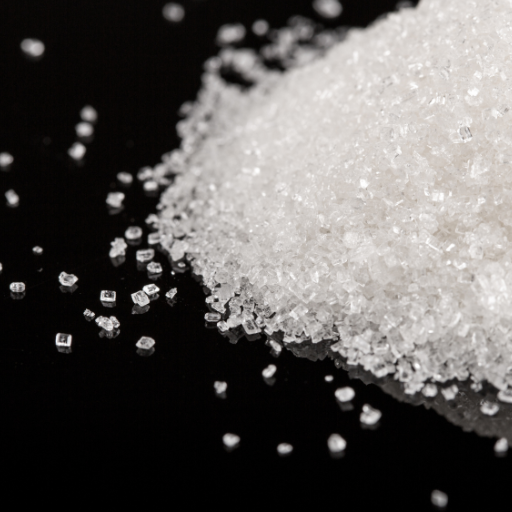
Beyond its use as a magnesium supplement, Epsom salt has attracted attention for its versatility in gardening. For pest control purposes, it can be diluted and sprayed on plants to keep spider mites, aphids, and other pests at bay, acting as a natural insecticide. Furthermore, this solution can also better seed germination by dissolving in water so that nutrients and moisture are absorbed more efficiently thereby increasing the vigor of young plants. Finally Epsom salt has been demonstrated to cause blossoming or fruiting of different plant species by application to soil because magnesium assists in chlorophyll production and energy transfer processes. Therefore, Epsom salt is an indispensable tool in sustainable gardening practices that consider several factors.
Pest Control: How Effective is Epsom Salt?
Most commonly used for pest control against garden pests including aphids and spider mites. According to reports from numerous sources, the main active ingredient of Epsom salt is magnesium sulphate which can discourage these insects from infesting plants. In addition, though, when mixed with water and applied on leaves, it could be effective enough to discourage some bugs. It should, however, be noted that though the product can repel bugs, it does not work alone for severe infestation cases, according to studies. For optimum results, use it together with other integrated pest management measures like the introduction of beneficial insects, the creation of diverse ecological systems around plants,and cultural practices promoting plant health, amongst others . Thus, it appears that while there are contributions that could be made by using this method for pest control, they are not central ones, especially relating to overall gardening approaches.
Enhancing Seed Germination with Epsom Salt
The research findings have shown that magnesia sulfate (Epson salts) significantly contributes towards enhancing germination rates among seeds since it contains the major component amongst others such as sodium chloride ions, etc. This leads into strong seedlings due to increased energy transfers within plants resulting from magnesium’s part in chlorophyll production. For example, planting with Epsom salts in the soil could increase nutrient uptake, hence improving germination rates for fast root development. A common recommendation is that one should dissolve about a tablespoon of these minerals into water and soak seeds before sowing or use as a spray to young plants. By doing this, the salt not only increases germination but also stimulates robust plant growth, thus making it an important tool when propagating and growing young plants using seedbeds.
Epsom Salt as a Foliar Spray: Benefits and Methods
Epsom salt used as foliar application has several benefits such as direct delivery of magnesium and sulfur to leaves. Magnesium is essential for photosynthesis since it enhances chlorophyll synthesis and thereby enhances energy production by the plant. Research findings from renowned horticulturists indicate that spraying on diluted solution commonly containing 1-2 tablespoons of Epsom salts per gallon of water can lead to better nutrient uptake, hence healthier plants, particularly those showing signs of lacking magnesium.
Furthermore, it is important to apply them properly in order for them to be more effective. It is best to use the spray on leaves of plants early in the morning or in the late afternoon so as not to burn leaves and allow for maximum absorption. This can be really helpful during plant growth as magnesium enables the production of enzymes that are needed for growth and also overall plant health. Application should be done every 4-6 weeks depending on the specific nutrient requirements of the crops grown.
To sum up, Epsom salts, when used as foliar sprays, not only provide necessary elements but also enhance physiological processes that make plants stronger, resulting in higher yields. Thus, they make a fine addition to comprehensive agronomic plant care techniques.
Reference sources
- HGTV
- Source: hgtv.com
- Summary: HGTV discusses how Epsom salt, which is magnesium sulfate, can help plants grow bushier, produce more flowers, and have better color. The article emphasizes the benefits of magnesium in enhancing nutrient uptake and overall plant health.
- Gardening Know How
- Source: gardeningknowhow.com
- Summary: Gardening Know How explains that Epsom salts provide essential magnesium and sulfur to plants, which can help in improving flower blooming and leaf color. It offers practical advice on how to properly apply Epsom salts to various plants.
- Jessica Damiano Substack
- Source: jessicadamiano.substack.com
- Summary: This article highlights that Epsom salts, high in magnesium sulfate, can increase phosphorus availability to plants, boosting their growth, vigor, and blooms. It provides insights into how and when to use Epsom salts effectively in the garden.
Frequently Asked Questions (FAQs)
Q: Can Epsom salt be used on all types of plants?
A: While Epsom salt can benefit many plants, it’s essential to research the specific needs of each plant type, as some may not require additional magnesium or sulfate.
Q: How often should I apply Epsom salt to my plants?
A: Epsom salt can typically be applied once a month, but the frequency may vary depending on the plant’s needs and soil conditions.
Q: Can Epsom salt burn my plants if used too much?
A: Yes, excessive use of Epsom salt can lead to nutrient imbalances and may harm your plants. Always follow recommended application rates.
Q: Is Epsom salt effective for pest control in the garden?
A: Epsom salt can deter certain pests like slugs and snails, but it’s not a comprehensive pest control solution. It’s best used alongside other methods.
Q: How should I apply Epsom salt to indoor potted plants?
A: Dissolve Epsom salt in water and use it as a foliar spray or water the plants directly, ensuring not to over-saturate the soil.
Q: Does Epsom salt change the pH level of the soil?
A: Epsom salt is neutral and does not significantly affect soil pH, making it safe to use without altering the soil’s acidity or alkalinity.
Q: Can I mix Epsom salt with other fertilizers?
A: Yes, Epsom salt can be mixed with other fertilizers to provide a balanced nutrient supply, but be cautious of the overall nutrient levels.
Q: What are the signs that my plant needs Epsom salt?
A: Yellowing leaves, particularly between the veins, may indicate a magnesium deficiency, which Epsom salt can help correct.






